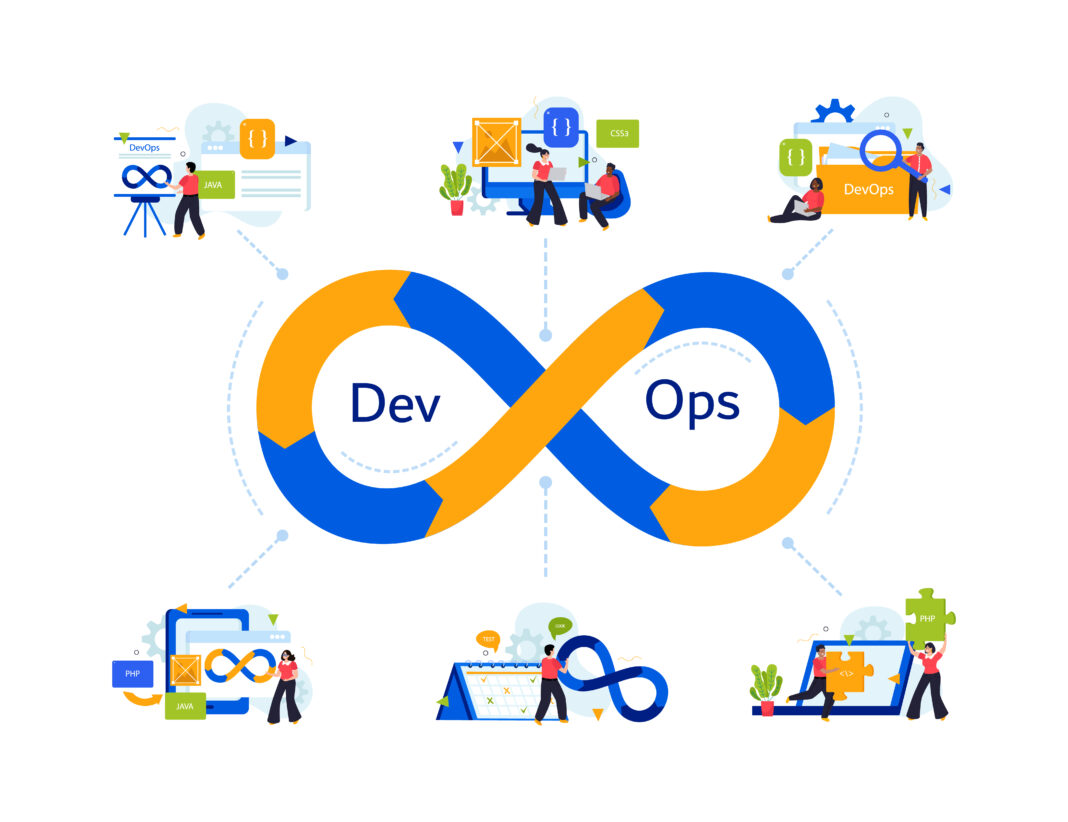DevOps automation has transformed how teams build, test, deploy, and monitor software. By eliminating manual processes, organizations achieve faster releases, fewer errors, and better collaboration between development and operations. This guide provides an in-depth look at the top DevOps automation tools, their key features, use cases, and how they fit into modern software delivery pipelines.

1. Jenkins: The Most Flexible CI/CD Automation Server
Jenkins is the leading open-source automation server for continuous integration and delivery (CI/CD). Originally developed as a fork of Hudson, Jenkins has grown into the most widely adopted automation tool in DevOps due to its extensibility and strong community support.
Why Jenkins Dominates CI/CD
- Massive Plugin Ecosystem (1,800+ plugins) – Jenkins integrates with virtually every DevOps tool, including Docker, Kubernetes, AWS, Azure, GitHub, and Slack.
- Pipeline as Code (Groovy Scripting) – Teams can define entire CI/CD workflows in code, making pipelines version-controlled and reusable.
- Distributed Builds – Jenkins can distribute workloads across multiple nodes, speeding up build and test processes.
- Self-Hosted & Cloud Options – Can be installed on-premises or used via cloud services like AWS, Google Cloud, and Azure.
Jenkins Use Cases
- Automating build, test, and deployment pipelines
- Running scheduled jobs (e.g., nightly builds, backups)
- Integrating with version control systems (Git, SVN)
- Deploying to cloud platforms (AWS, Kubernetes, Docker)
Jenkins Limitations
- Requires maintenance (plugin updates, security patches)
- Steeper learning curve for complex pipelines
- UI feels outdated compared to newer SaaS alternatives
Who Should Use Jenkins?
Jenkins is ideal for teams that need a customizable, self-hosted CI/CD solution with strong community support.
2. Docker: Standardizing Applications with Containers
Docker revolutionized DevOps by introducing lightweight, portable containers that ensure consistency across development, testing, and production environments.
How Docker Works
- Containers vs. Virtual Machines – Unlike VMs, containers share the host OS kernel, making them faster and more resource-efficient.
- Docker Images – Immutable templates that define an application’s environment (OS, libraries, dependencies).
- Docker Hub – A public registry with millions of pre-built images (e.g., Nginx, PostgreSQL, Redis).
Key Docker Features
- Fast Startup Time – Containers launch in seconds vs. minutes for VMs.
- Isolation & Security – Each container runs in its own namespace, preventing conflicts.
- Multi-Platform Support – Runs on Linux, Windows, macOS, and cloud platforms.
- Kubernetes Integration – Docker containers can be orchestrated at scale using Kubernetes.
Docker Use Cases
- Ensuring consistent environments from development to production
- Microservices architecture deployments
- CI/CD pipelines (running tests in isolated containers)
- Local development environments (no more “works on my machine” issues)
Docker Alternatives
- Podman (Red Hat’s Docker alternative, daemonless)
- Containerd (Lower-level container runtime used by Kubernetes)
Who Should Use Docker?
Any team developing applications that need to run consistently across different environments.
3. Kubernetes: The Gold Standard for Container Orchestration
Kubernetes (K8s) is the leading platform for automating containerized application deployment, scaling, and management. Originally developed by Google, it is now maintained by the Cloud Native Computing Foundation (CNCF).
Core Kubernetes Concepts
- Pods – The smallest deployable units (one or more containers).
- Deployments – Manage pod lifecycles (scaling, updates, rollbacks).
- Services – Enable network access to pods (load balancing).
- Ingress – Manages external HTTP/HTTPS traffic routing.
Why Kubernetes is Essential
- Auto-Scaling – Automatically adjusts resources based on demand (Horizontal Pod Autoscaler).
- Self-Healing – Restarts failed containers and replaces unhealthy nodes.
- Multi-Cloud & Hybrid Support – Runs on AWS EKS, Google GKE, Azure AKS, and on-premises.
- Declarative Configuration – Infrastructure is defined in YAML files (GitOps-friendly).
Kubernetes Use Cases
- Managing large-scale microservices
- Running stateful applications (databases with persistent storage)
- CI/CD deployments (Jenkins + Kubernetes)
- Hybrid cloud deployments (on-prem + cloud)
Kubernetes Alternatives
- Docker Swarm (Simpler but less feature-rich)
- Nomad (Lightweight orchestrator by HashiCorp)
Who Should Use Kubernetes?
Enterprises running containerized applications at scale, especially in cloud or hybrid environments.
4. Ansible: Agentless Automation for Configuration Management
Ansible, acquired by Red Hat, is a simple yet powerful automation tool for configuration management, application deployment, and task automation. Unlike Puppet or Chef, Ansible is agentless, using SSH for communication.
How Ansible Works
- Playbooks – YAML files define automation tasks (easy to read and write).
- Modules – Pre-built scripts for common tasks (e.g., installing packages, managing users).
- Inventory – Defines target machines (can be dynamic with cloud integrations).
Key Ansible Features
- No Agents Needed – Uses SSH/WinRM, reducing setup complexity.
- Idempotency – Running a playbook multiple times won’t cause unintended changes.
- Extensive Module Library – 3,000+ modules for cloud, networking, security.
- Tower/AWX – Enterprise GUI for managing playbooks at scale.
Ansible Use Cases
- Automating server provisioning and configuration
- Patch management across hundreds of servers
- Cloud provisioning (AWS, Azure, GCP)
- Network device automation (Cisco, Juniper)
Ansible Alternatives
- Puppet (More complex but powerful for large enterprises)
- Chef (Ruby-based, strong compliance features)
Who Should Use Ansible?
Sysadmins and DevOps teams looking for a lightweight, agentless automation tool.
5. Terraform: Infrastructure as Code (IaC) for Cloud & On-Prem
Terraform, by HashiCorp, is the leading Infrastructure as Code (IaC) tool, allowing teams to define and provision infrastructure using declarative configuration files.
How Terraform Works
- HCL (HashiCorp Configuration Language) – Simple syntax for defining resources.
- Providers – Plugins for AWS, Azure, Kubernetes, VMware, etc.
- State File – Tracks real-world infrastructure to manage changes.
Key Terraform Features
- Multi-Cloud Support – Manages AWS, Azure, GCP, and on-premises.
- Plan & Apply Workflow – Previews changes before execution.
- Modules – Reusable infrastructure components (e.g., VPC, Kubernetes cluster).
- Workspaces – Manages multiple environments (dev, staging, prod).
Terraform Use Cases
- Cloud provisioning (AWS EC2, Azure VMs)
- Kubernetes cluster setup
- Database and network automation
- Compliance-as-Code (enforcing security policies)
Terraform Alternatives
- Pulumi (Uses real programming languages like Python, Go)
- AWS CloudFormation (AWS-native but limited to AWS)
Who Should Use Terraform?
Cloud engineers and DevOps teams managing multi-cloud or hybrid infrastructure.

